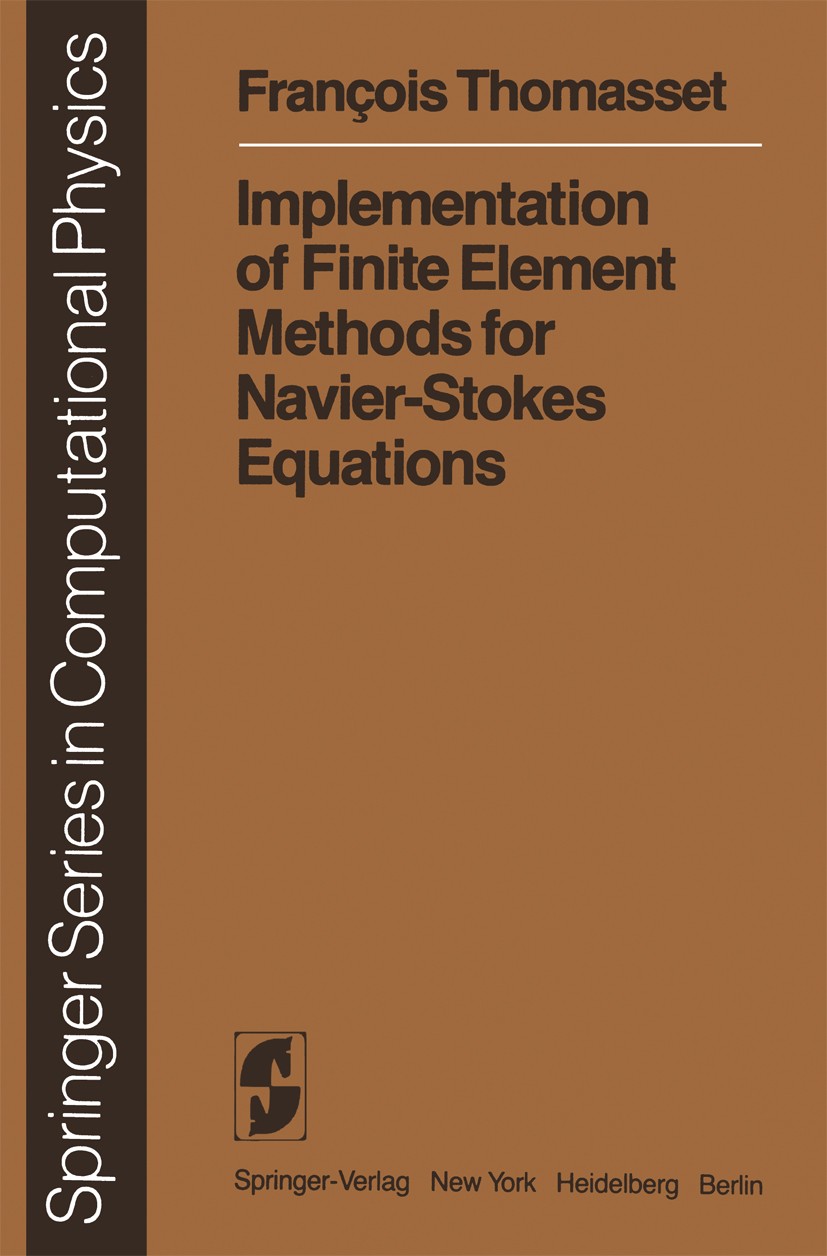| 書目名稱 | Implementation of Finite Element Methods for Navier-Stokes Equations | | 編輯 | Fran?ois Thomasset | | 視頻video | http://file.papertrans.cn/463/462560/462560.mp4 | | 叢書名稱 | Scientific Computation | | 圖書封面 |  | | 描述 | In structure mechanics analysis, finite element methods are now well estab- lished and well documented techniques; their advantage lies in a higher flexibility, in particular for: (i) The representation of arbitrary complicated boundaries; (ii) Systematic rules for the developments of stable numerical schemes ap- proximating mathematically wellposed problems, with various types of boundary conditions. On the other hand, compared to finite difference methods, this flexibility is paid by: an increased programming complexity; additional storage require- ment. The application of finite element methods to fluid mechanics has been lagging behind and is relatively recent for several types of reasons: (i) Historical reasons: the early methods were invented by engineers for the analysis of torsion, flexion deformation of bearns, plates, shells, etc ... (see the historics in Strang and Fix (1972) or Zienckiewicz (1977?. (ii) Technical reasons: fluid flow problems present specific difficulties: strong gradients,l of the velocity or temperature for instance, may occur which a finite mesh is unable to properly represent; a remedy lies in the various upwind finite element schemes which recently | | 出版日期 | Book 1981 | | 關(guān)鍵詞 | Finite-Element-Methode; Navier-Stokes equation; Navier-Stokes equations; Navier-Stokessche Gleichung; St | | 版次 | 1 | | doi | https://doi.org/10.1007/978-3-642-87047-7 | | isbn_softcover | 978-3-642-87049-1 | | isbn_ebook | 978-3-642-87047-7Series ISSN 1434-8322 Series E-ISSN 2198-2589 | | issn_series | 1434-8322 | | copyright | Springer Science+Business Media New York 1981 |
The information of publication is updating

|
|
 |Archiver|手機(jī)版|小黑屋|
派博傳思國際
( 京公網(wǎng)安備110108008328)
GMT+8, 2025-10-6 18:57
|Archiver|手機(jī)版|小黑屋|
派博傳思國際
( 京公網(wǎng)安備110108008328)
GMT+8, 2025-10-6 18:57


